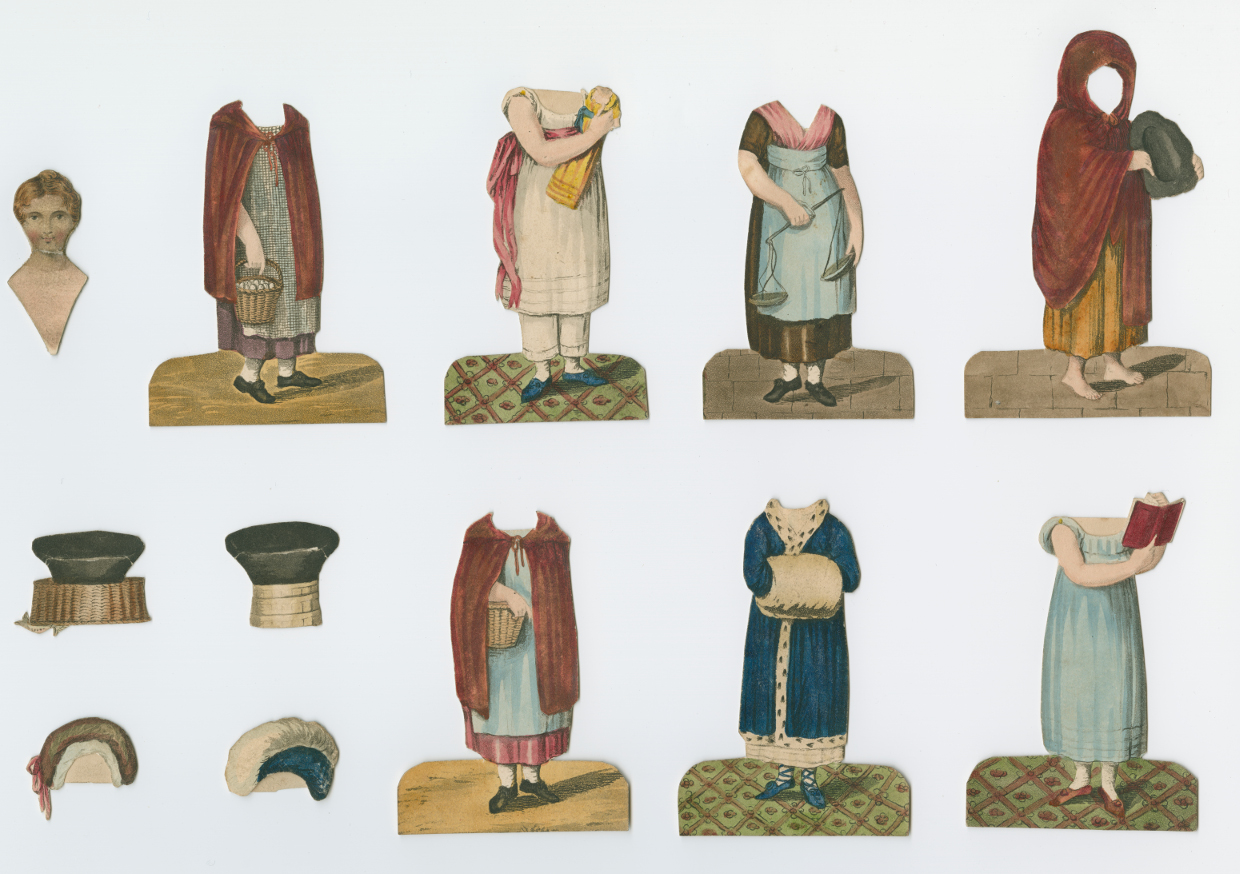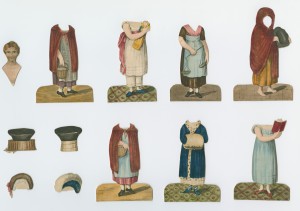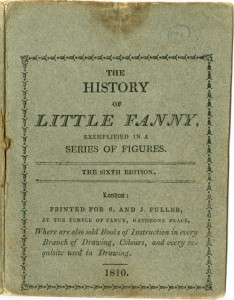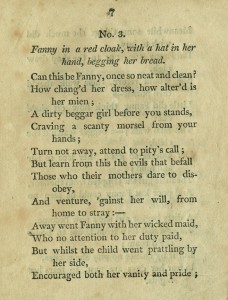
January 20, 2016, by Kathryn Steenson
The Fall and Rise of Little Fanny
One of the best aspects of working with Manuscripts & Special Collections is that, every so often, we will stumble across something extraordinarily beautiful, profound or moving – and sometimes, we find something like ‘The History of Little Fanny: exemplified in a series of figures‘ (Briggs Collection Pamphlet PZ6.H4).
Somehow missed off the list of great children’s literature, this book was published in 1810 and is accompanied by a cut-out paper figure and accessories instead of pictures. The idea was that as the story progressed, the reader would change the doll’s costume to reflect Fanny’s current situation, creating their own illustrations for their book.
Like most 19th century children’s stories, it has a very strong moral theme and was intended to teach right from wrong. The titular Fanny is a young girl whose primary flaws include liking pretty clothes and playing with dolls. Fanny “with books will ne’er her mind employ”, a point that publishers of books would no doubt consider a major character defect. Having been forbidden by her mother to wear her fancy cloak and muff to the park because the weather is too warm, Fanny sulks and whilst the maid accompanying her is distracted in a shop, she is lured away by a beggar.
The story could have taken a much darker turn at this point, but instead Fanny becomes a ragged, dirty beggar herself: “in fear her days are past [sic], in tears her nights”. She realises her error of her ways and “her prayers she call’d to mind – til then forgot – Kneeling, confess’d the justice of her lot”. A woman takes pity on her plight and employs her as an errand girl selling fish, but not enough pity to help reunite the scared and homesick child with her mother. Eventually she is allowed to sell milk and eggs at the market, which, a note explains to the reader, is a cleaner and thus more respectable position. She has become a hard-working and honest girl who misses her mother greatly, but “prudence still withheld maternal love” until it is felt that her normal childish behaviour has been suitably punished.

Little Fanny’s outfits, including the fancy blue cloak, barefoot beggar girl, and reformed book-lover.
Fanny is sent to deliver butter to a house and is shocked to discover that it is her mother’s. Fearing rejection, she is unable to knock on the door and weeps on the steps outside until her mother finds her. Thankfully her mother is delighted to have her daughter back and Fanny is “returned to what she ought to be”. Having learned her lesson with no apparent long-term trauma, we leave her as “pious, modest, diligent and mild, Belov’d by all, a good and happy child”. She even develops a love of reading, although you can hardly blame her for being reluctant to leave the house after her ordeal.
There was a companion story for boys, ‘The History and Adventures of Little Henry‘, which follows a similar theme of a child suffering due to disobedience and finding redemption through hard-work, prayer and good behaviour. Note the different titles: only Henry has ‘adventures’!
By modern standards, the writing is trite and the rhyme scheme awful, but it was popular enough to go through at least six editions. Judging from its condition, this particular book doesn’t appear to have had much use. Books like this were expensive enough that they would have been given as gifts to middle class children. Cheaper versions did exist, but very few have survived and those tend to be in poor condition as the paper was thin and they were played with rather than kept for show.
Little Fanny and Little Henry are part of the Briggs Collection of Educational Literature. They and the other Special Collections materials can be found in the University’s library catalogue and are available to view by staff, students and members of the public in the Reading Room at King’s Meadow Campus. If you’d like to find out more please visit our website, sign up to our newsletter, or follow us on Twitter @mssUniNott.
National Storytelling Week runs from the 30th January – 6th February. You can find more information about the range of events celebrating oral storytelling on the website, or on Twitter with #nationalstorytellingweek.
No comments yet, fill out a comment to be the first



Leave a Reply